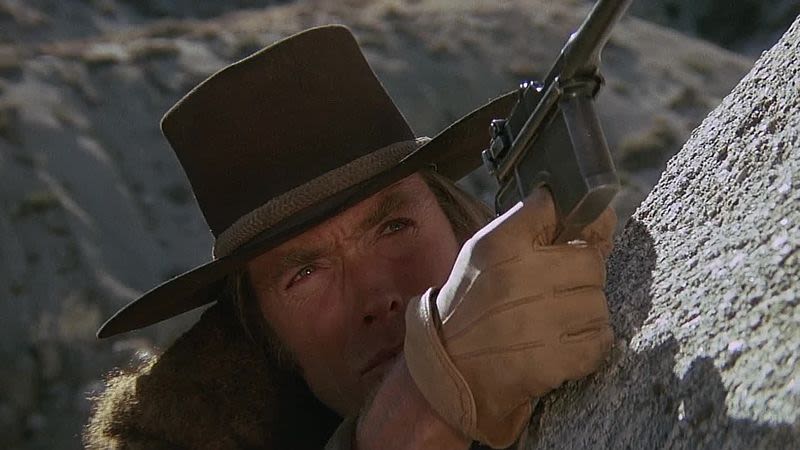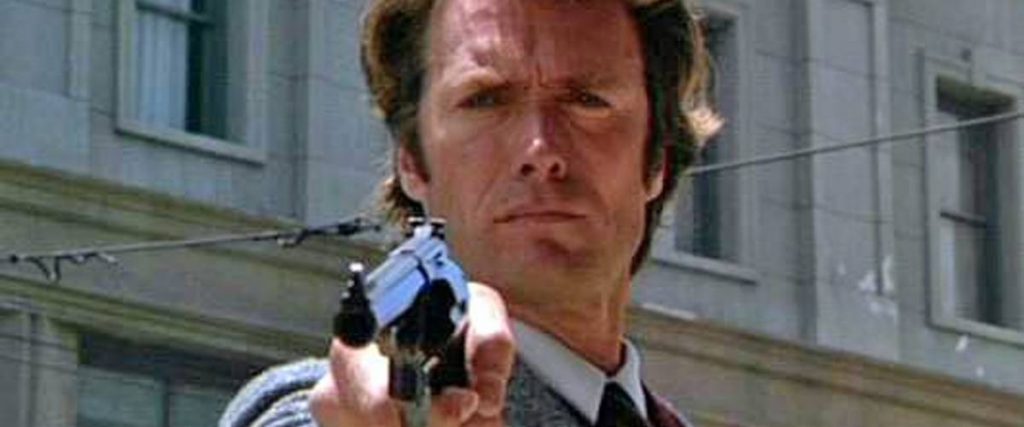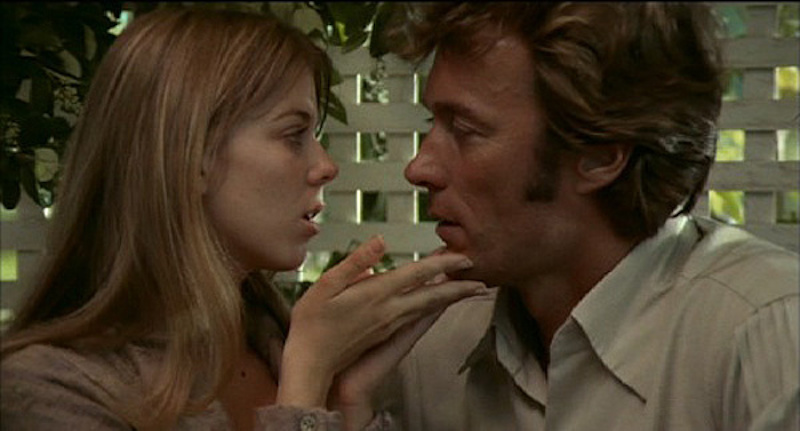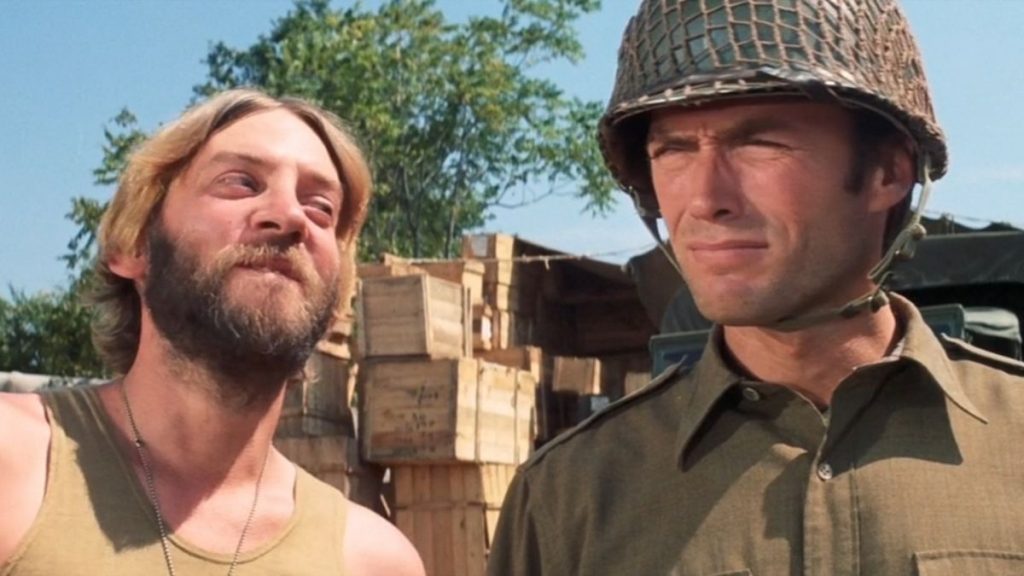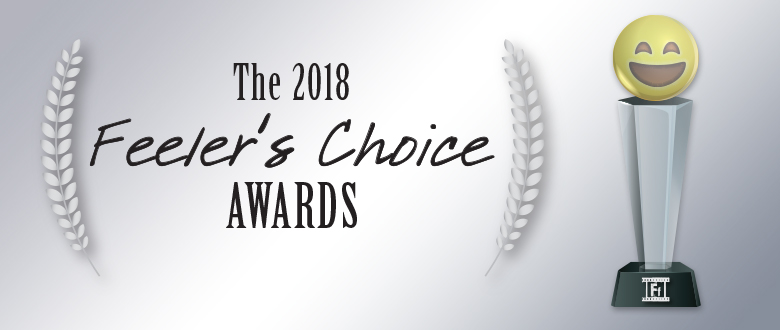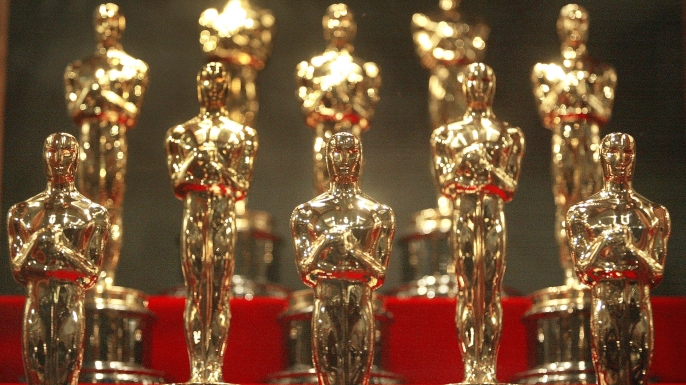Ready for the Oscars this Sunday? The Feelin’ Film team — Aaron White, Patrick Hicks, Steve Clifton, Don Shanahan, and Jeremy Calcara — are here to tell you just who will be taking home those glorious golden statues. Below you will find five definitive lists of who will win at the 2018 Oscars, followed by a brief explanation by one team member of why they made that choice. We believe that these are all objectively correct predictions. Do with that as you will, and if you’re in an Oscar pool this year – GOOD LUCK!
Best Picture
Aaron – GET OUT
Patrick – THREE BILLBOARDS OUTSIDE EBBING, MISSOURI
Steve – THE SHAPE OF WATER
Don – GET OUT
Jeremy – THREE BILLBOARDS OUTSIDE EBBING, MISSOURI
Best Actor
Aaron – Gary Oldman
Patrick – Gary Oldman
Steve – Gary Oldman
Don – Gary Oldman
Jeremy – Gary Oldman
Best Actress
Aaron – Frances McDormand
Patrick – Frances McDormand
Steve – Frances McDormand
Don – Frances McDormand
Jeremy – Sally Hawkins
Best Supporting Actor
Aaron – Sam Rockwell
Patrick – Sam Rockwell
Steve – Sam Rockwell
Don – Sam Rockwell
Jeremy – Willem Dafoe
Best Supporting Actress
Aaron – Allison Janney
Patrick – Allison Janney
Steve – Allison Janney
Don – Allison Janney
Jeremy – Allison Janney
Best Director
Aaron – Guillermo del Toro
Patrick – Guillermo del Toro
Steve – Guillermo del Toro
Don – Guillermo del Toro
Jeremy – Guillermo del Toro
Best Adapted Screenplay
Aaron – CALL ME BY YOUR NAME
Patrick – CALL ME BY YOUR NAME
Steve – CALL ME BY YOUR NAME
Don – CALL ME BY YOUR NAME
Jeremy -CALL ME BY YOUR NAME
Best Original Screenplay
Aaron – GET OUT
Patrick – GET OUT
Steve – GET OUT
Don – GET OUT
Jeremy – GET OUT
Best Cinematography
Aaron – BLADE RUNNER 2049
Patrick – BLADE RUNNER 2049
Steve – BLADE RUNNER 2049
Don – BLADE RUNNER 2049
Jeremy – BLADE RUNNER 2049
Best Costume Design
Aaron – PHANTOM THREAD
Patrick – PHANTOM THREAD
Steve – PHANTOM THREAD
Don – PHANTOM THREAD
Jeremy – PHANTOM THREAD
Best Film Editing
Aaron – I, TONYA
Patrick – DUNKIRK
Steve – DUNKIRK
Don – BABY DRIVER
Jeremy – BABY DRIVER
Best Makeup and Hairstyling
Aaron – DARKEST HOUR
Patrick – DARKEST HOUR
Steve – DARKEST HOUR
Don – DARKEST HOUR
Jeremy – DARKEST HOUR
Best Original Score
Aaron – THE SHAPE OF WATER
Patrick – THE SHAPE OF WATER
Steve – THE SHAPE OF WATER
Don – THE SHAPE OF WATER
Jeremy – PHANTOM THREAD
Best Original Song
Aaron – “This is Me” from THE GREATEST SHOWMAN
Patrick – “This is Me” from THE GREATEST SHOWMAN
Steve – “This is Me” from THE GREATEST SHOWMAN
Don – “Remember Me” from COCO
Jeremy – “Remember Me” from COCO
Best Production Design
Aaron – BLADE RUNNER 2049
Patrick – THE SHAPE OF WATER
Steve – THE SHAPE OF WATER
Don – THE SHAPE OF WATER
Jeremy -THE SHAPE OF WATER
Best Sound Editing
Aaron – DUNKIRK
Patrick – DUNKIRK
Steve – BABY DRIVER
Don – DUNKIRK
Jeremy – BABY DRIVER
Best Sound Mixing
Aaron – DUNKIRK
Patrick – DUNKIRK
Steve – DUNKIRK
Don – DUNKIRK
Jeremy – DUNKIRK
Best Visual Effects
Aaron – WAR FOR THE PLANET OF THE APES
Patrick – WAR FOR THE PLANET OF THE APES
Steve – WAR FOR THE PLANET OF THE APES
Don – WAR FOR THE PLANET OF THE APES
Jeremy – WAR FOR THE PLANET OF THE APES
Best Animated Film
Aaron – COCO
Patrick – COCO
Steve – COCO
Don – COCO
Jeremy – COCO
Best Foreign Language Film
Aaron – A FANTASTIC WOMAN
Patrick – A FANTASTIC WOMAN
Steve – A FANTASTIC WOMAN
Don – A FANTASTIC WOMAN
Jeremy – THE SQUARE
Best Documentary Feature
Aaron – FACES PLACES
Patrick – FACES PLACES
Steve – ICARUS
Don – FACES PLACES
Jeremy – FACES PLACES
Best Documentary Short
Aaron – HEROIN(E)
Patrick – EDITH + EDDIE
Steve – EDITH + EDDIE
Don – EDITH + EDDIE
Jeremy – HEROIN(E)
Best Animated Short
Aaron – NEGATIVE SPACE
Patrick – DEAR BASKETBALL
Steve – DEAR BASKETBALL
Don – DEAR BASKETBALL
Jeremy – DEAR BASKETBALL
Best Live-Action Short
Aaron – DEKALB ELEMENTARY
Patrick – DEKALB ELEMENTARY
Steve – THE SILENT CHILD
Don – DEKALB ELEMENTARY
Jeremy – WATU WOTE: ALL OF US
BEST PICTURE: How did I get this draw? LADY BIRD was my favorite film of 2017, but it’s too benign for Oscar voters. GET OUT would be a statement win, especially in our current social climate, but I just don’t think older voters are going to push a horror film to the top. For me that leaves THREE BILLBOARDS OUTSIDE EBBING, MISSOURI and THE SHAPE OF WATER. The preferential ballot and lack of a directing nom for Martin McDonough indicate to me that THREE BILLBOARDS OUTSIDE EBBING, MISSOURI is vulnerable, even though it keeps hanging around and over performing everywhere. I’m counting on enough voters dropping it low on their ballots, where I think THE SHAPE OF WATER will garner enough top votes to push it over the top. Ask me again tomorrow and I’ll probably tell you something different. – Steve
BEST ACTOR: As much of a lock as there has ever been, Gary Oldman’s transformative performance as Winston Churchill in the Best Picture-nominated DARKEST HOUR is sure to be recognized for its greatness. This performance feels like total immersion into the character with his veins seemingly about to pop at any time, and his stutters and pauses perfectly capturing the enormous pressure weighing Churchill down. Oldman has already won almost every major award for Best Actor thus far and will rightfully take home the Oscar, too. – Aaron
BEST ACTRESS: If you were to add up all the lead-up awards (as I have), this would be a neck-and-neck contest between Sally Hawkins of THE SHAPE OF WATER and Frances McDormand for THREE BILLBOARDS OUTSIDE EBBING, MISSOURI. The way I see things shaking out, this might be the one Oscar Martin McDonagh’s film wins all night and it’s probably the right one in this Year of Women. Slot McDormand over Hawkins in a race closer than we’ll ever see. – Don
BEST SUPPORTING ACTOR: Willem Dafoe’s Bobby Hicks was the glue that held life at the Magic Castle Inn and Suites together. His presence there not only kept the place in business, but his character brought a paternal presence to it’s residence. I’m glad he got a nod for the nomination, but it’s hard to beat out a film with two strong supporting leads. Sam Rockwell edges out Woody Harrelson for the win. – Patrick
BEST SUPPORTING ACTRESS: I would argue that this is Oscar’s toughest category this year. All five women nominated gave performances that commanded the screen every time they appeared. Given what we’ve seen in awards season thus far, all signs seem to point to Allison Janney winning her first Academy Award for her portrayal of Tonya Harding’s mother LaVona Fay Golden in Craig Gillespie’s I, TONYA. Janney has long been one of Hollywood’s most reliable actresses and she absolutely becomes Golden in a darkly funny role as the unrelentingly awful mom (and lover of tropical winged creatures). If there’s any justice in the world, she’ll agree to share the trophy with that bird. – Jeremy
BEST DIRECTOR: In a very deep category, it’s wonderful to see Hispanic (Guillermo del Toro for THE SHAPE OF WATER), black (Jordan Peele for GET OUT), and female (Greta Gerwig for LADY BIRD) diversity. That’s promising for the state of film, but there can only be one winner and it’s going to be Guillermo del Toro. Since January, him winning the Golden Globe, the BAFTA, and, most importantly, the DGA Award from his Directors Guild peers seals his Oscar victory. – Don
BEST ADAPTED SCREENPLAY: Earlier in this awards season, THE DISASTER ARTIST was running away and hiding with this category as the preordained choice of cult and niche cinephile fans. As soon as that Hollywood in-joke of a film hit general audiences, it died a death about as quick as the film it’s based on. Surging ahead instead is CALL ME BY YOUR NAME, adapted by veteran screenwriter James Ivory, who has never won the Big One after years of Merchant-Ivory awards bait offerings. This is the place for voters to throw this topical LGBT message film a bone and to cap a respected career for Ivory. – Don
BEST ORIGINAL SCREENPLAY: This was once wide open, but it seems to have settled into a two horse race between GET OUT and THREE BILLBOARDS OUTSIDE EBBING, MISSOURI. As much as I really want to see Greta Gerwig on that Oscar stage, I fear support for LADY BORD is starting to wane, and it could get shut out completely. I really believe Jordan Peele and GET OUT are going to squeak by with this one. THREE BILLBOARDS OUTSIDE EBBING, MISSOURI is pesky, but with no persons of color considered a threat for an acting win, you can bet the Academy will want to honor their commitment to squashing #OscarsSoWhite in some fashion, and Peele is very deserving here. – Steve
BEST CINEMATOGRAPHY: Roger Deakins has been nominated for Best Cinematography 14 times and somehow, inexplicably, he has gone home with empty hands 13 of them so far. This has to be the year the Academy finally recognizes his staggering greatness, right? BLADE RUNNER 2049 was sadly skimmed over in major categories, but my thinking is that the critically acclaimed film will still win some technical awards, including this one. The one contender that has performed well on the award circuit and could yet again spoil Roger’s party is most likely Dan Laustsen for his gorgeous work in THE SHAPE OF WATER. But that film will win plenty of other awards. This one goes to Deakins. – Aaron
BEST COSTUME DESIGN: Um, really? Was there ever any doubt as to what film was going to win Best Costume Design. The movie is called PHANTOM THREAD for goodness sake. Besides that, the stunning costumes add to the overall tone of the entire film and make it the most worthy recipient of the Oscar. – Patrick
BEST FILM EDITING: Last year, Patrick defined Film Editing this way: “Pacing would be the operative word to describe the quality of a well-edited film. Did it flow? Did each scene lead well into the next? Were there abrupt changes to the tone of the film as a result of the way it was pieced together?” Well, this year there are a few films that likely good take home the award, chief among them being DUNKIRK, BABY DRIVER, and I, TONYA. I wouldn’t be surprised if any of these win, but the award circuit buzz seems to favor I, TONYA and this feels like a year when we’re going to see several films taking home multiple statues. – Aaron
BEST MAKEUP/HAIRSTYLING: As the bald man of the group, it is my absolute honor to judge and handicap this category. I know my sugar-honey-iced-tea. For me, the fact this is the one remaining Oscar category to still skate by on three chincy nominees instead of a full field of five is ridiculous. Surely two more films could have been honored to compete. Of the three, this is duel for “Best Lead Character Transformation” more than anything else, and Gary Oldman’s disappearance into Sir Winston Churchill for DARKEST HOUR will win over making Jacob Tremblay as ugly as he is cute in WONDER. – Don
BEST ORIGINAL SCORE: 2017 seemed to be the year of what has come to be known as modern minimalist music in film. BLADE RUNNER 2049 and DUNKIRK, scored by Hans Zimmer, really dive deep into this style. Desplat’s THE SHAPE OF WATER, however, takes a different approach, and really becomes another character in the film. Beautiful and haunting, and a lock to take home the award. – Patrick
BEST ORIGINAL SONG: Sigh, the best song never seems to win the Oscar, and the frontrunner all along has been “Remember Me”, from COCO. It’s nice and sentimental, but it isn’t particularly memorable outside the confines of the film. I’m expecting the Academy voters to finally honor the true best song and go with “This is Me”, from THE GREATEST SHOWMAN. This song has become a global anthem of inspiration, and has made a star out of powerhouse singer, Keala Settle. – Steve
BEST PRODUCTION DESIGN: This award could easily go to THE SHAPE OF WATER, but like with Best Cinematography this seems like the proper place to recognize BLADE RUNNER 2049 and in a year with so many worthy nominees of high quality, this one goes to the futuristic world over the fairy tale one. – Aaron
BEST SOUND EDITING: It might seem a little odd that a film that was repeatedly criticized in its initial release for having dialogue that was hard to hear is now the odds on favorite to win the award for best sound editing. But upon further examination audiences realized that they were hearing exactly what Gregg Landaker, Gary Rizzo and Mark Weingarten wanted them to hear in Christopher Nolan’s DUNKIRK. Nolan’s completely immersive film makes the viewer feel like they’re on the beach at Dunkirk largely because of the deft hand with which this crew recreates the sounds of war. BABY DRIVER may sneak up and take this one, but my money is on DUNKIRK. – Jeremy
BEST SOUND MIXING: Every year we talk about how the difference in Sound Editing and Mixing is so small that usually the same film wins both. While I do think BABY DRIVER’s unique style could change things up this year by winning Sound Editing, ultimately I believe both awards will go to the relentlessly visceral sound of DUNKIRK. Honestly, in any other year DUNKIRK would be a slam dunk, but BABY DRIVER does give me pause due to how integral sound is to it as well. – Aaron
BEST VISUAL EFFECTS: I’m not going to apologize for supporting what I think is the runaway pick in this category. That’s not to say the other four nominees aren’t worthy. They clearly are. But when you can get me to cry from watching a digital ape act on screen, you’re doing something right. I also believe this will be Andy Serkis’ indirect Oscar for his performance as Caesar because both need each other to make this success story what it is. – Patrick
BEST ANIMATED FEATURE FILM: Pixar typically has a stranglehold on this category, and this year is no different. The first of their films set south of the border is a celebration of family and following your dreams, with all of the classic Pixar bells and whistles thrown in. They have no competition here. COCO it is. – Steve
BEST FOREIGN LANGUAGE FILM: There was some trading going on among Feelin’ Film contributors regarding who would be given the opportunity to highlight this category and after a long fight that ended in Patch struggling but ultimately succeeding in yelling “UNCLE” through his tears, I won the opportunity. I’m picking Ruben Ostlund’s THE SQUARE here. Why? Because I saw the trailer and I like Elizabeth Moss. The Swedish film, which is about an art installation at the X-Royal Art Museum in Stockholm, has received rave reviews and won the Palme d’Or at Cannes. It’s going to win. – Jeremy
BEST DOCUMENTARY (FEATURE): The odds on favorite to take away this year’s statue for best documentary feature is Agnes Varda’s FACE PLACS. The doc, that follows the famed director and the artist known only as JR while they travel the countryside of France and take large photos of the people they find there, has stolen hearts of viewers everywhere it has played. This will be Varda’s second Oscar in less than a year after having been given the Academy Honorary Award back in November. – Jeremy
BEST DOCUMENTARY SHORT SUBJECT: The dreaded “short” categories will make or break your Oscar ballot. This year is a toss up, but I’m leaning toward EDITH + EDDIE, a story about physical abuse of the elderly, sure to tug at a few heartstrings and anger a few people along the way. – Steve
BEST ANIMATED SHORT: This year’s nominees were all strong contenders, and my favorite isn’t even the one I think SHOULD win. GARDEN PARTY stands above as a visually stunning display of animation on top of a left field plot (if you could call it that) with an ending that is the perfect exclamation point to its tale. But I think my favorite of the five will take home the statue this year. DEAR BASKETBALL is a fantastic balance of words, visuals and music, wrapped up in a visceral experience that isn’t forgettable, at least not to me. (This may end up being first time an NBA player will have won an Oscar which will be crazy in and of itself). – Patrick
BEST LIVE-ACTION SHORT: As a nice get with press credentials, I’ve actually been lucky enough to see all five of these obscure films. I don’t have to throw a dartboard and guess like most everyone else. In this unfortunate era of mass shootings, the absolutely harrowing experience that is DEKALB ELEMENTARY reenacting at true story of a school secretary talking down a would-be school gunman is, far and away, the best of this bunch. – Don
Agree with our picks? Disagree? Want to share your own? Leave us some feedback. We’d love to discuss them with you. Thanks for reading!
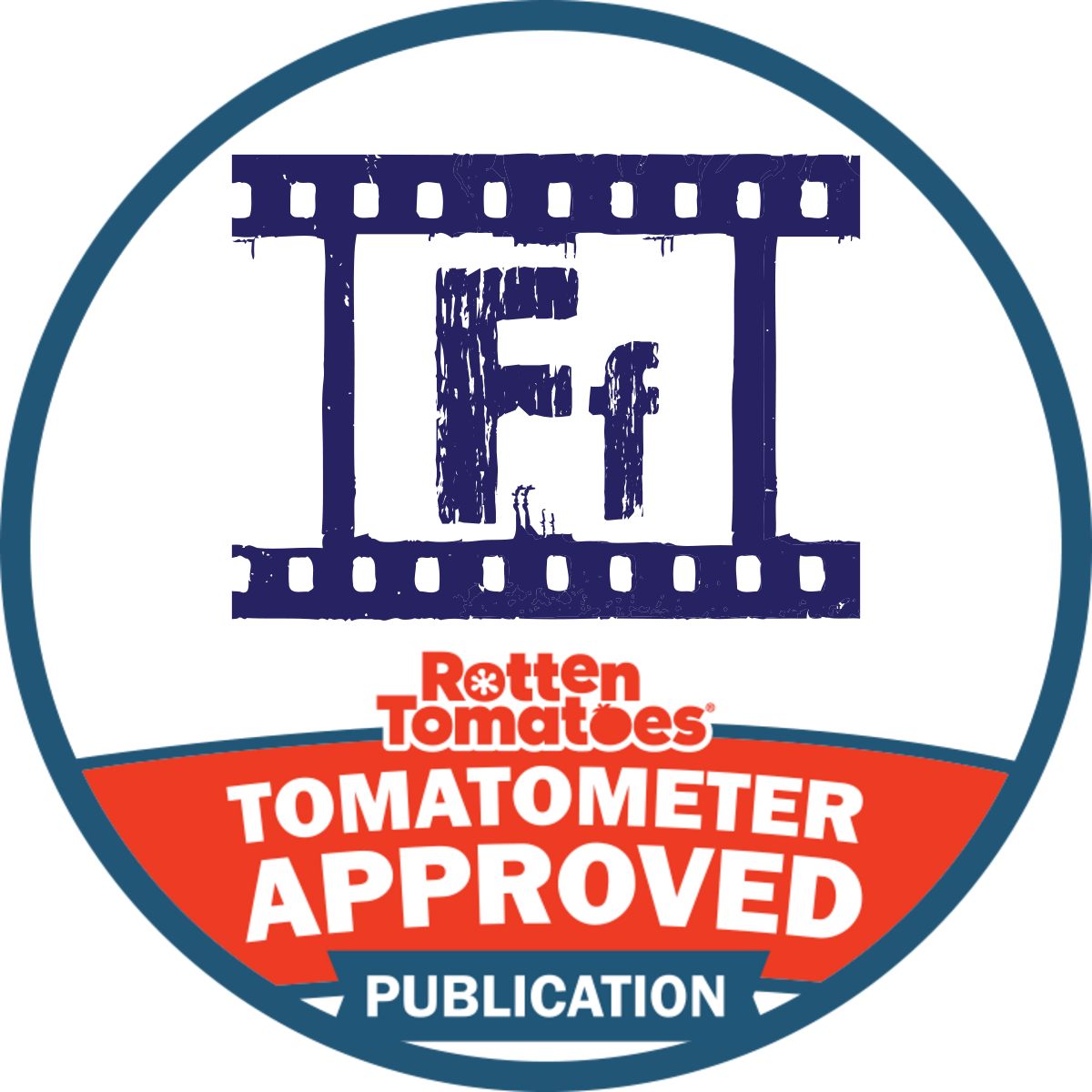





 Reed Lackey is based in Los Angeles, where he writes and podcasts about film and faith. His primary work is featured on the More Than One Lesson website and podcast, as well as his primary podcast,
Reed Lackey is based in Los Angeles, where he writes and podcasts about film and faith. His primary work is featured on the More Than One Lesson website and podcast, as well as his primary podcast, 